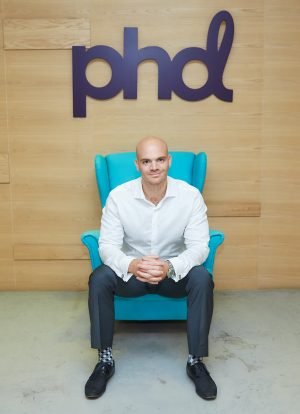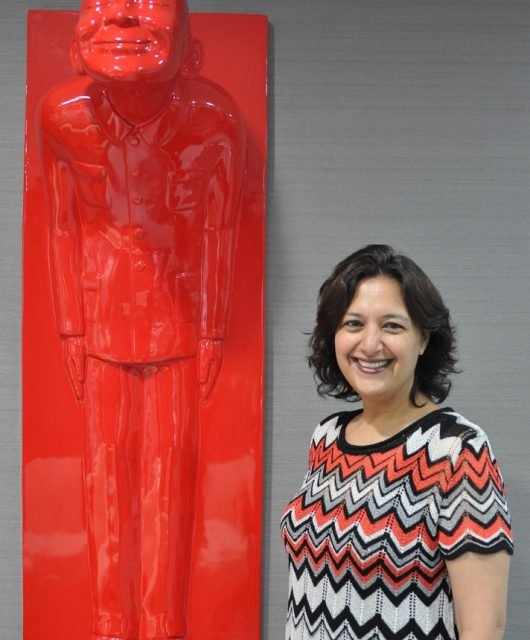How Big Data Is Transforming Brands: Q&A With PHD Egypt’s Nour Saleh
Big data has become one of the buzziest words in the world of brands. In the digital age, everything around us just screams “data”. Brands, today, have access to advanced technologies allowing them to leverage big data and extract insights and better promote their brand with their target audience and enhance their decision making. Yet, in the face of an enormous amount of data, it is often difficult to filter out the right signals from the noise. Brands will be able to act smart by leveraging the power of big data, taking the analytics to a whole new level.
The Brand berries interviewed Nour Saleh, General Manager of PHD Egypt, to get his acumen on how can brands extract value out of Big Data .
BB: A significant change to strategic brand management has taken place as consumer trends drastically evolve. The large increase in customer interactions with brand touchpoints has created a huge amount of data. What are the opportunities and challenges that brands face due to this data revolution?
 NS: Consumer behavior and lifestyles are indeed evolving and our ever-increasing usage of digital platforms to interact with content and brands creates an enormous amount of information. It comes in all shapes and sizes, from the mundane to the unique and valuable. This data is transforming the way a company understands and connects with consumers.
NS: Consumer behavior and lifestyles are indeed evolving and our ever-increasing usage of digital platforms to interact with content and brands creates an enormous amount of information. It comes in all shapes and sizes, from the mundane to the unique and valuable. This data is transforming the way a company understands and connects with consumers.
We’ve moved from data paucity to data overload and while there are plenty of benefits from data, both big and small, there are also challenges.
On the plus side, data allows a greater understanding of a number of components and factors in our communications strategies, like the profile of consumers, their preferences and how they move down the purchase funnel. It helps make our messages and placements more relevant and impactful.
On the down side, this data must be sourced, managed and used carefully and ethically. It’s not only a big responsibility, it’s also a big job. Data never comes ‘ready-to-use’ and often requires a fair amount of cleaning up and formatting before it can release important insights. The organization itself must be ready to collect and use that information, in terms of infrastructure, people and even culture. Decision-making and the balance of power will change once data gets injected in an organization.
BB: The era of Big Data has arrived, yet, few brand marketers seem to properly understand/make use of it. How can data become a brand asset that’s considered a primary source of competitive advantage and future earnings for brands?
NS: Having access to data is merely the beginning of the journey, not the destination. You know what they say: data doesn’t matter, it’s what you do with it. To do something useful with it, you need a proper plan and set-up.
The first benefit is a better understanding of customers and prospects that helps create tailored, engaging and effective digital experiences. To achieve this, data must be organized before it can be mined and analyzed.
The second benefit is a better grasp of the impact of marketing on business metrics, including a customer’s lifetime value (CLV). There are plenty of other KPIs a business will keep an eye on, like the cost of acquisition or retention for example, but the ability to target segments more precisely is a major performance driver. Ultimately, data helps marketing investments work harder and with more accountability.
BB: Whether launching new brands or repositioning an established brand higher than its rivals, how can big data help brand managers address the needs of customers, introduce new products & services, anticipate social changes and understand how consumers will react to various branding efforts?
NS: Traditionally, to understand consumers you had to conduct research, asking people questions to which you would get more or less reliable and insightful answers. This has now been replaced by the stream of data consumers share or leave behind as they navigate and transact online. This information is far more authentic, accurate and revealing because you’re observing actual behavior and detecting real preferences, not an interpretation of them. It’s also a lot more current and timely. We’re even moving into the predictive territory, being able to anticipate consumer behavior and purchases.
The precision we’re getting from this data, in terms of profiles, location, segmentation, interests and choices, cuts a lot of the approximation out. Knowing where to fish means you’re packing your funnel with quality leads and prospects. It also helps define the product or service better so that you can turn customers into advocates. The direct interaction with them allows brands to learn from the experience and use that information to gain better insights that will lead to better communications with customers.
BB: Can you give examples on brands whereas big data was able to foster a better competitive advantage for them and help them make more effective brand decisions and create a better brand culture inside?
NS: There are many ways to use data to create a competitive advantage, from creating your product and promoting it, to delivering it and shaping the customer experience. Obviously, the first examples that come to mind are international brands with global products.
What is interesting is how local players, or even international ones, have used data to target local consumers. Anghami is one of those. The online music platform managed to identify a market gap and come in with a solution and product to fill it. The beauty is that they are always updating and evolving, using the data they gather from the different users to personalize the app and provide each user with a unique experience that is relevant to them.
Another example is Durex. Through data and analytics, they managed to understand the Egyptian market, the consumers and, most importantly, the culture and taboos better. With these insights, they engaged with consumers more intelligently, coming up with amazing campaigns and products.
They are the first brand to split social into “For Him” and “For her” pages with special content for each as they had an issue communicating to both males and females on the same page earlier.
The banking experience is also being redefined through tech platforms that run on data. Commercial International Bank, for instance, were among the first to move into behavioral targeting and look alike audience to communicate the new Wealth platform in Egypt. Unlike other banks offering similar products, they went in with a data intensive and insights based digital strategy that gave them an edge.
BB: One of the most critical aspects of any brand is the experience it communicates. How can brands use big date to reshape its brand experience?
NS: While a brand will seek to appeal to the largest possible number of customers, we know that a one-size-fits all approach has its limits. Even more so today when people are more demanding than ever, expecting an experience and service that suits them. Sparking desire and stimulating demand is hard enough, creating loyalty and advocacy is harder still. A meaningful and rewarding brand experience is an essential step on that journey.
Data plays a key role in shaping that wall-to-wall brand experience. Hence brands must gather, analyze and use it properly to not only understand the consumer journey but actually personalize it. From a communications perspective, it will help them deliver the right message to the right person at the right time.
Personalization at scale is one of the key benefits of data and how meaningful brand experiences are engineered. By highlighting the entry and exit points in the purchase funnel, the contributors and stumbling blocks to conversion, data charts the optimum path for the consumer journey. It informs the messaging, environment and context for the brand communication down to the individual, optimizing this in real time.
BB: In a critical thinking setup for the big data, does collecting more data lead to a better understanding of consumer behavior?
NS: Most good things come with a downside and excess usually carries a risk. There can be such a thing as too much data because it can blind you. Without the method and the means to carry proper analysis, much of that data will be useless and fail to unearth the insights you seek.
BB: The Trust Mess: From your opinion, how can brands come up with an ethical framework when using customers data?
NS: The majority of consumers tend to trust brands with their data, as long as they value what they get in return, be it online shopping or access to information or entertainment. They agree to the terms and conditions without even reading them and expect brands and publishers to safely, and ethically, store and use this data. We have seen that in some cases that trust is misplaced. Be it through legislation or self-regulation, we will move to greater levels of data protection. Brands will be expected to provide consumers with options about the data they share, informing them of how it’s being stored and used. Seeking explicit permissions to use that data is the best way to base the relationship with consumers on trust.





